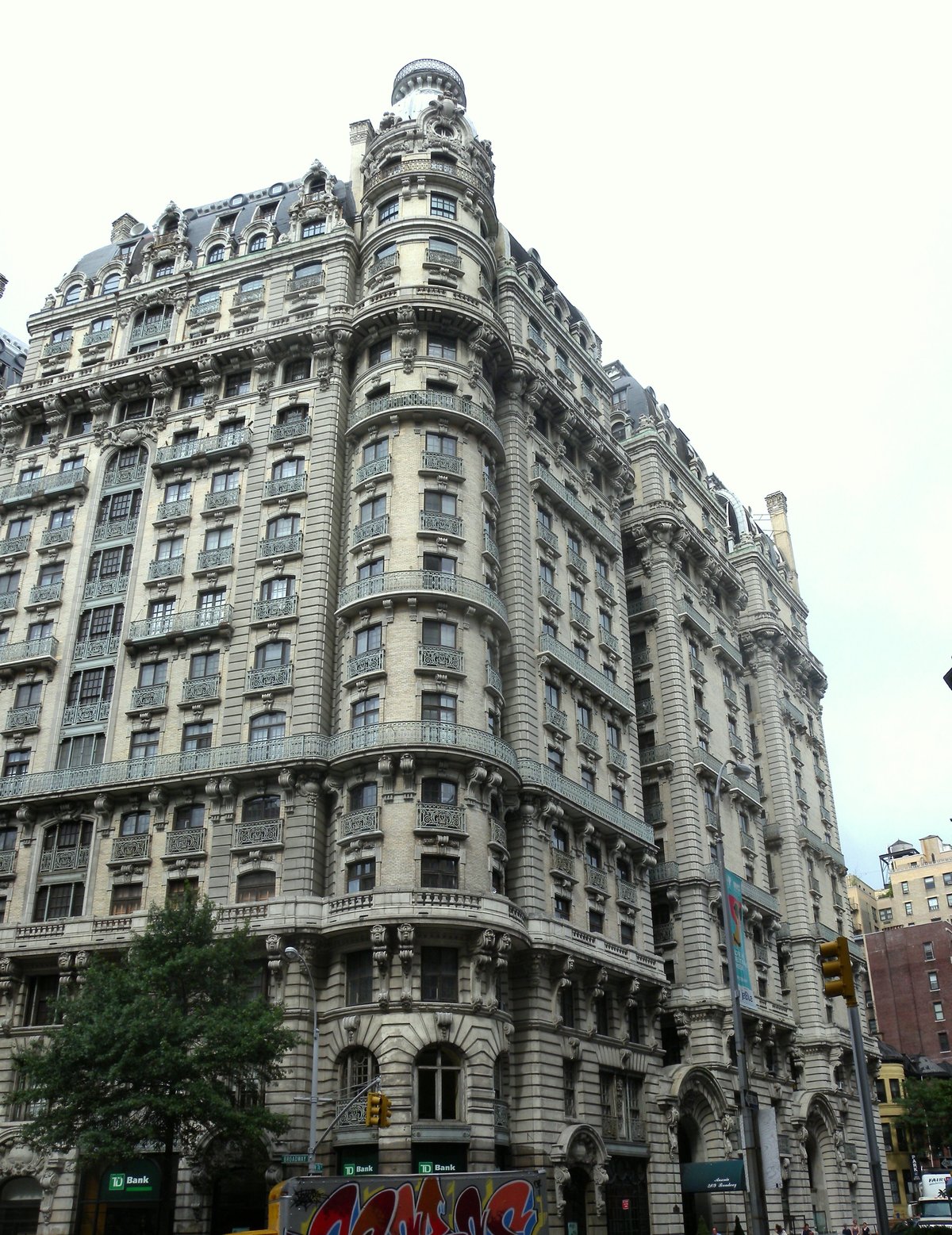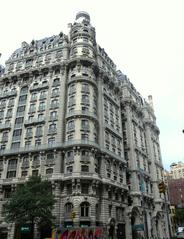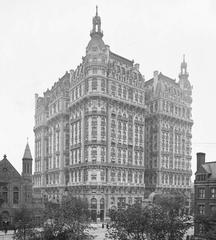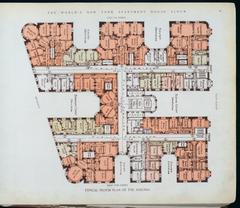
The Ansonia, New York City: Visiting Hours, Tickets, and Historical Significance
Date: 14/06/2025
Introduction
Located at 2109 Broadway on Manhattan’s Upper West Side, the Ansonia stands as one of New York City’s most iconic and architecturally significant landmarks. Renowned for its stunning Beaux-Arts and Second Empire design, illustrious former residents, and vibrant cultural legacy, the Ansonia offers visitors a unique window into the city’s Gilded Age and ongoing urban evolution. While interior access is mostly reserved for residents, its grand façade and storied past continue to captivate architecture enthusiasts and history buffs alike. This guide provides an in-depth look at the Ansonia’s history, architectural marvels, notable residents, and all the practical information you need to plan a visit.
Table of Contents
- Historical Overview
- Notable Residents and Colorful Past
- Visiting the Ansonia: Hours, Tickets, and Tours
- Nearby Attractions and Travel Tips
- Frequently Asked Questions (FAQ)
- Summary and Recommendations
- References
Historical Overview
Origins and Architectural Vision
The Ansonia was the brainchild of William Earl Dodge Stokes, an eccentric millionaire who sought to create New York City’s most opulent residential hotel. Construction began in 1899, and the building opened in 1904. Stokes’ vision was inspired by the luxury of Europe’s grand hotels, and he set out to surpass them by incorporating cutting-edge amenities and monumental scale (NYMag, New York’s New York).
Design and Engineering Innovations
Architect Paul E.M. Duboy designed the Ansonia in the French Beaux-Arts style, featuring a striking limestone and terra-cotta façade, rounded towers with domes, ornate balconies, and a distinctive mansard roof. The building’s undulating exterior, light courts, and intricate ironwork evoke the elegance of Parisian boulevards (Daytonian in Manhattan).
Inside, the Ansonia was a marvel of engineering for its time. It boasted 1,400 rooms, 340 suites, wide staircases, a grand ballroom, and amenities such as pneumatic tubes for mail, a Turkish bath, and one of New York’s first residential swimming pools. Stokes even installed a rooftop farm with chickens and goats, reflecting his eccentric approach to luxury living (Daytonian in Manhattan, New York’s New York).
The building’s steel frame enabled its impressive height, while thick masonry walls provided fireproofing and excellent sound insulation—attributes that made it particularly popular among musicians.
Cultural and Social Legacy
Over the decades, the Ansonia evolved with the city. It weathered periods of decline and renewal, including the removal of its ornate metalwork for World War II, a bohemian resurgence in the 1960s and 70s, and a major restoration during its conversion to condominiums in the late 20th century (CityRealty).
The Ansonia’s basement famously hosted the Continental Baths, a pioneering LGBTQ+ nightlife venue where Bette Midler and Barry Manilow launched their careers. Its colorful history encompasses everything from alleged World Series fixings to legendary cabaret performances, contributing to its enduring reputation as a center of social and cultural intrigue (MCNY, The Vintage News).
Notable Residents and Colorful Past
The Ansonia attracted an extraordinary roster of residents who left an indelible mark on its legacy:
- Musicians and Composers: Enrico Caruso, Sergei Rachmaninoff, Igor Stravinsky, Arturo Toscanini, Gustav Mahler, Yehudi Menuhin, Lily Pons, and Ezio Pinza all called the Ansonia home at various points, earning it the nickname “Palace for the Muses” (Ansonia Realty).
- Theatrical and Literary Figures: Florenz Ziegfeld, Sarah Bernhardt, Sol Hurok, Billie Burke, Moss Hart, Tony Curtis, and novelist Theodore Dreiser, who wrote An American Tragedy while living here (Ansonia Realty, MCNY).
- Sports Legends: Babe Ruth famously practiced saxophone in his suite, while the 1919 Black Sox scandal was allegedly plotted within its walls (The Vintage News).
- Other Notables: `Abdu’l-Bahá (Baháʼí Faith leader) and fashion designer Koos van den Akker added to the building’s diverse legacy.
The Ansonia was also a backdrop for scandal, eccentricity, and innovation—from hallway target practice by Lauritz Melchior to the notorious Continental Baths and Plato’s Retreat (The Vintage News).
Visiting the Ansonia: Hours, Tickets, and Tours
Exterior Viewing and Accessibility
- Public Access: The Ansonia is a private residential building; public access to the interior is generally not permitted. However, its façade can be admired from Broadway and 73rd/74th Streets at any time (CityRealty).
- Photography: Exterior photography is encouraged, especially in daylight for best effect. Please respect residents’ privacy.
Guided Tours and Special Events
- Tours: Occasionally, local historical societies or special events offer guided tours of the Ansonia’s public spaces and staircases. Check with New York City tour providers or community boards for current offerings.
- Tickets: No tickets are required to view the exterior. If available, tickets for guided tours or open house events are sold through tour organizers; inquire ahead for details (Untapped Cities).
- Accessibility: The sidewalks and building exterior are fully accessible; interior tours may have restrictions—confirm with event organizers.
How to Get There
- Subway: Take the 1, 2, or 3 trains to 72nd Street. The Ansonia is a short walk north on Broadway.
- Bus: M72 and M104 serve the area.
- Nearby Parking: Limited street parking is available; public transit is recommended.
Nearby Attractions and Travel Tips
- Central Park: Just a few blocks east—ideal for combining with your visit.
- Lincoln Center: Renowned performing arts complex nearby.
- American Museum of Natural History: A short walk north.
- The Dakota: Another iconic residential building in the neighborhood.
- Local Dining: The Upper West Side is known for its vibrant café and restaurant scene.
Visitor Tips:
- Wear comfortable shoes for walking tours.
- Consider booking a broader Upper West Side walking tour that includes the Ansonia.
- Explore virtual tours and historical images through the Museum of the City of New York.
Frequently Asked Questions (FAQ)
Q: Is the Ansonia open to the public?
A: The building is a private residence; only the exterior is accessible for public viewing. Special tours may provide limited interior access.
Q: Are there regular visiting hours?
A: No regular visiting hours exist for the public. The exterior can be enjoyed at any time.
Q: Do I need a ticket to visit?
A: No ticket is needed for exterior viewing. Special events or interior tours may require advance ticketing.
Q: Is the Ansonia wheelchair accessible?
A: The exterior and surrounding sidewalks are accessible. Interior access depends on tour or event arrangements.
Q: Can I take photographs?
A: Yes, exterior photography is encouraged. Please do not photograph interiors without permission.
Q: Are virtual tours available?
A: Some historical organizations offer online resources and virtual tours. Check their websites for details.
Summary and Recommendations
The Ansonia remains a striking emblem of New York City’s architectural grandeur and cultural vibrancy. From its ambitious inception by William Earl Dodge Stokes to its days as a creative haven for musicians and artists, the building has continually reflected the city’s dynamic spirit. While interior visits are generally restricted, the Ansonia’s remarkable exterior, storied history, and prime location near other top attractions make it a must-see landmark.
For those interested in a deeper experience, check local listings for special tours or events, and use digital resources—like the Audiala app—for curated walking tours and historical context. Exploring the Ansonia alongside nearby sites such as Central Park and Lincoln Center offers a rewarding glimpse into the Upper West Side’s rich heritage.
References
- NYMag
- New York’s New York
- MCNY
- CityRealty
- The Vintage News
- Untapped Cities
- Daytonian in Manhattan
- Ansonia Realty
- Wikipedia
- City Beautiful Blog
For more historical explorations and real-time updates on New York City’s landmarks, download the Audiala app or follow us on social media.


























































































































































































































































































